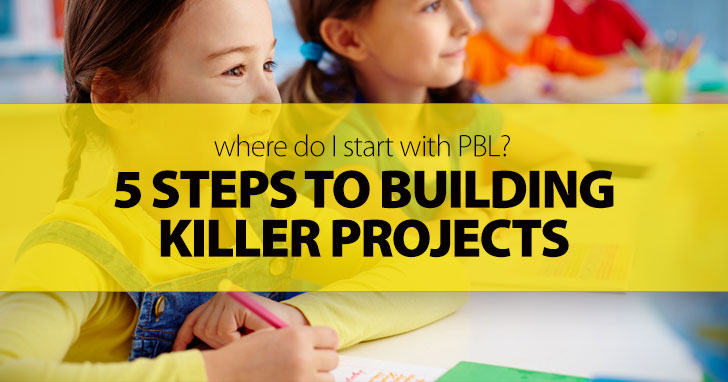8 Simple Steps to the Best Lesson You’ll Teach All Year


I mean they can be a lot of work, but they are a great time for the kids and usually result in some laughs, or at least warm and fuzzy feelings, for the teachers. Of course part of why they are so awesome is the fact that students learn so much more from applying what they have learned in a different setting. It helps them get comfortable with the language, as well as to learn to use it in new or creative ways rather than the same old forms. Furthermore, it lets them realize that learning can be fun.
Having said all that, planning projects can be a lot of work. It can be hard to decide where to start. One thing is clear. It would be best if the planning could take place before the necessary language is taught in regular lessons. That gives the teacher time to add in any vocabulary or key phrases necessary for the project itself. If the project is added as an afterthought it must either stay within the existing parameters or start with a vocabulary/key phrases lesson to fill in any gaps in the students’ knowledge. Before we launch into the discussion of how, make sure you actually have time to complete a project based lesson. Many of these projects will take two to four classes to see through. That seems like a lot, but no worries! Here are 5 steps to building killer projects to help sum up a unit.

The concept is the bedrock of the project. What will they produce over the course of the project? What will the students actually enjoy (see point 2)? What material was taught and how will it be applied in the project? It’s not beneficial to do a super fun sports project when the topic is on ordering food in a restaurant. Fun, yes, but not effective. This process can actually be pretty tricky. So, the concepts for your project based lesson (PBL) must fit the language points and topics you are trying to teach. This leads to some pretty clear pairings as well as immediately letting certain topics out.
Start by asking yourself when you would use the language in the course of everyday life. Is it possible to replicate those circumstances in the classroom? Probably not, but is there a way to approximate those conditions in the classroom? Barring that, what is a fun way can they use in the language in the classroom setting?
Here are some examples of concepts that pair well with certain topics:
Pen pals for introductions (Best case scenarios these are with people in the teacher’s home country, but if that is not possible it can be done between classes).
Market activities for shopping units.
Presentations that must use certain idioms taught in class.
Make up a sport for comparatives and superlatives.
Considering student interest and project concepts should probably happen around the same time. What do your students care about? What gets them interested? What do they talk about when you bump into them in the hallways? If you don’t have the answers to any of the questions you can ask some of your colleagues, especially those with kids (you should also get to know your students better). If at all possible, try to incorporate some of these interests into your projects. Student enthusiasm will skyrocket and you will have a better chance of drawing quiet students out of their shells. Something to note is that in certain age groups and certain cultures, male and female students have very different interests. Make sure you are not alienating one to please the other.
Often overlooked, this can result in teacher frantically buying materials with their own funds the night before. Not that there is anything wrong with teachers buying a few things for school, but it should really be by choice rather than necessity. A big part of this question is space. If you are planning a puppet show as the PBL for your personalities and physical descriptions unit, do you have space to put up the stage? Where will you store the puppets without them being destroyed? All these sorts of questions are pretty important to sort out well before deciding to go forward with a PBL.
This can be very simple. How many days do you plan to allocate? What is the main project they will create? What materials do you need? What is a rough timetable? Below is a sample table that I have found useful in creating a PBL outline. It is partially completed as an example. In the primary outline area you can include notes about extensions, where you need to be (computer lab vs. classroom), or if there are materials that you need for only one day. Using this table, you can see at a glance, what you need, what you are doing that day, and where your students should be in their progress.
PBLs are fun, but if they are presented to the class in the wrong light they can just look like a lot of work. “What do you mean we have to create an entire travel itinerary? We just spent three weeks talking about travel language.” We have all heard those complaints. It’s not another activity, it’s a cool project that we get to do instead of more lectures, vocabulary worksheets, and phrase practice! It’s gonna be super fun, there’s posters, and presentations, all kinds of cool stuff. I am sure we are also familiar with the appropriate language so I won’t beat it to death.
The only other thing I would note is that it can be helpful to tie PBLs into your classroom rewards system in some big way.
Yes it still requires a fair bit of creativity to come up with fun and/or realistic ways for the students to use the language, but I can assure you it is worth it. If you follow these steps, the process starts to simplify itself and before you know it you will be knee deep in projects. Enjoy!
| Title: Travel the World | |
| Project Deliverable | A travel itinerary, including mode of transport, timetable, and main attractions in at least three cities. |
| Materials | Itinerary worksheets Computer access for research Poster material for creating a visual representation of their itinerary Maps of the selected countries |
| Day One: | Introduce the project and assign groups. Play a short introduction game. Allocate the countries to the various groups. Group with the most points from the game choose first, second most choose second and so on. Allow them time to begin researching their destination. |
| Day Two: | Fill in as necessary |
| Day Three: | Final presentations and class vote on the winner. Students cannot vote for their own group. |